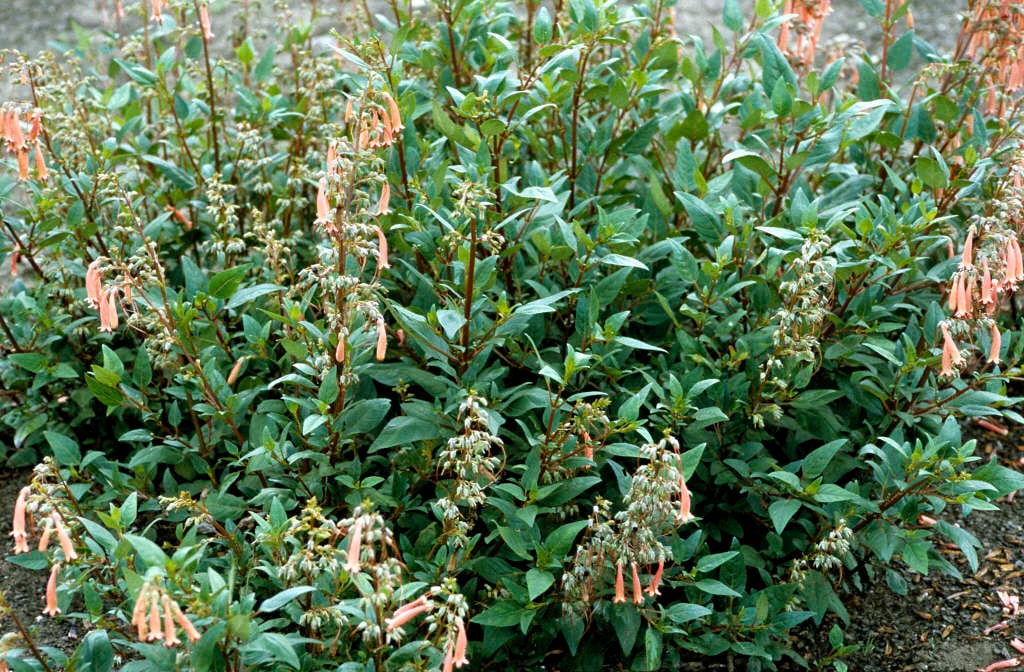Phygelius aequalis 'Trewidden Pink'
Cape figwort 'Trewidden Pink'
A semi-evergreen shrub with toothed, ovate dark green leaves and large panicles of tubular dusky pink flowers 6cm in length, in summer and early autumn

Buy this plant
Size
Ultimate height
0.5–1 metresTime to ultimate height
5–10 yearsUltimate spread
0.5–1 metresGrowing conditions
Moisture
Moist but well–drained, Well–drainedpH
Acid, Alkaline, NeutralColour & scent
| Stem | Flower | Foliage | Fruit | |
| Spring | Green | |||
|---|---|---|---|---|
| Summer | Pink | Green | ||
| Autumn | Pink | Green | ||
| Winter | Green |
Position
- Full sun
Aspect
West–facing or East–facing
Exposure
Sheltered Hardiness
H5Botanical details
- Family
- Scrophulariaceae
- Native to GB / Ireland
- No
- Foliage
- Semi evergreen
- Habit
- Bushy
- Genus
Phygelius are evergreen shrubs, usually grown as herbaceous perennials in cooler areas, with simple, ovate leaves and large panicles of tubular flowers in summer and autumn
- Name status
Accepted
How to grow
Cultivation
Grows well in most fertile soils but may require some winter protection in colder areas. Can be grown as a shrub or as a herbaceous perennial
Propagation
Propagate by seed sown in containers in a cold frame in spring or take softwood cuttings in late spring. Suckers may be detached and rooted in spring
Suggested planting locations and garden types
- Coastal
- Patio and container plants
- City and courtyard gardens
- Cottage and informal garden
- Wall side borders
- Flower borders and beds
Pruning
Cut back to base in late spring or pruning group 9
Pests
May be susceptible to figwort weevil and capsid bug
Diseases
May be susceptible to honey fungus (rarely)
Love gardening
Sign up to receive regular gardening tips, inspiration, offers and more
View our Privacy Policy
Get involved
The Royal Horticultural Society is the UK’s leading gardening charity. We aim to enrich everyone’s life through plants, and make the UK a greener and more beautiful place.